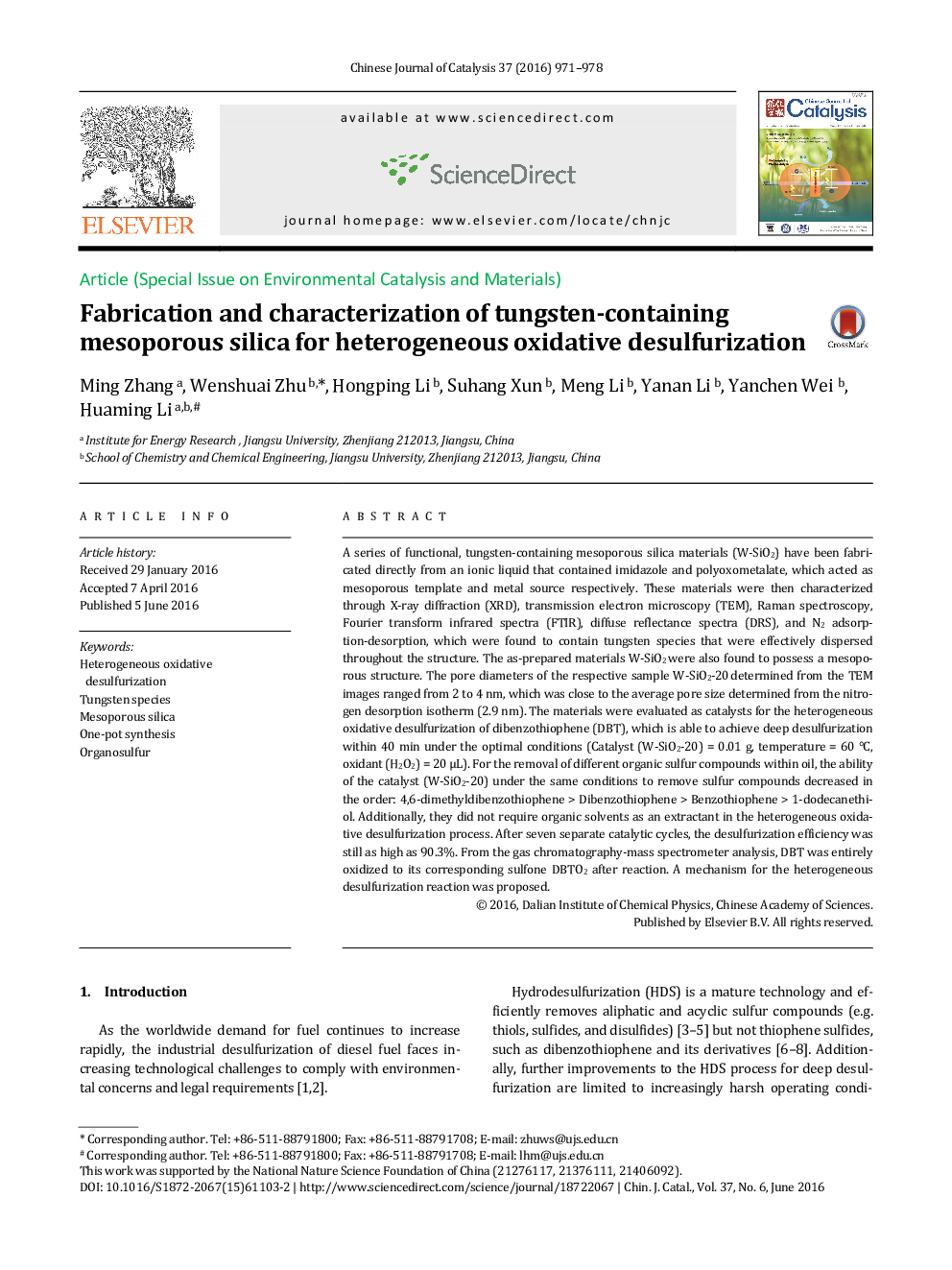| Article ID | Journal | Published Year | Pages | File Type |
|---|---|---|---|---|
| 59595 | Chinese Journal of Catalysis | 2016 | 8 Pages |
A series of functional, tungsten-containing mesoporous silica materials (W-SiO2) have been fabricated directly from an ionic liquid that contained imidazole and polyoxometalate, which acted as mesoporous template and metal source respectively. These materials were then characterized through X-ray diffraction (XRD), transmission electron microscopy (TEM), Raman spectroscopy, Fourier transform infrared spectra (FTIR), diffuse reflectance spectra (DRS), and N2 adsorption-desorption, which were found to contain tungsten species that were effectively dispersed throughout the structure. The as-prepared materials W-SiO2 were also found to possess a mesoporous structure. The pore diameters of the respective sample W-SiO2-20 determined from the TEM images ranged from 2 to 4 nm, which was close to the average pore size determined from the nitrogen desorption isotherm (2.9 nm). The materials were evaluated as catalysts for the heterogeneous oxidative desulfurization of dibenzothiophene (DBT), which is able to achieve deep desulfurization within 40 min under the optimal conditions (Catalyst (W-SiO2-20) = 0.01 g, temperature = 60 °C, oxidant (H2O2) = 20 µL). For the removal of different organic sulfur compounds within oil, the ability of the catalyst (W-SiO2-20) under the same conditions to remove sulfur compounds decreased in the order: 4,6-dimethyldibenzothiophene > Dibenzothiophene > Benzothiophene > 1-dodecanethiol. Additionally, they did not require organic solvents as an extractant in the heterogeneous oxidative desulfurization process. After seven separate catalytic cycles, the desulfurization efficiency was still as high as 90.3%. From the gas chromatography-mass spectrometer analysis, DBT was entirely oxidized to its corresponding sulfone DBTO2 after reaction. A mechanism for the heterogeneous desulfurization reaction was proposed.
Graphical AbstractIn the desulfurization process, the organic sulfur compounds were firstly absorbed by the mesoporous material and then oxidized into the corresponding sulfones by the active peroxo species, which were formed by reaction of tungsten species and H2O2.Figure optionsDownload full-size imageDownload as PowerPoint slide
